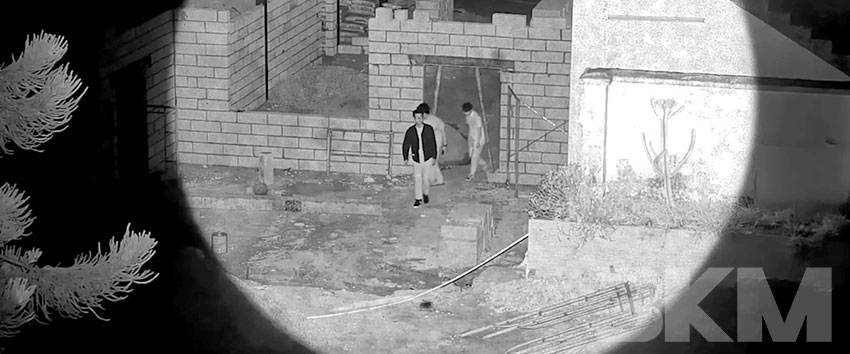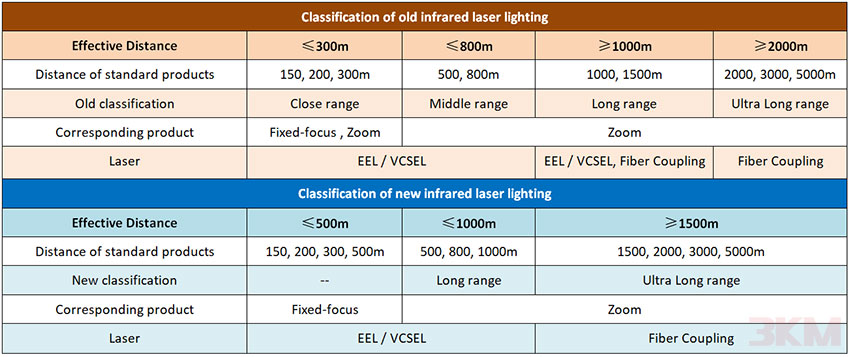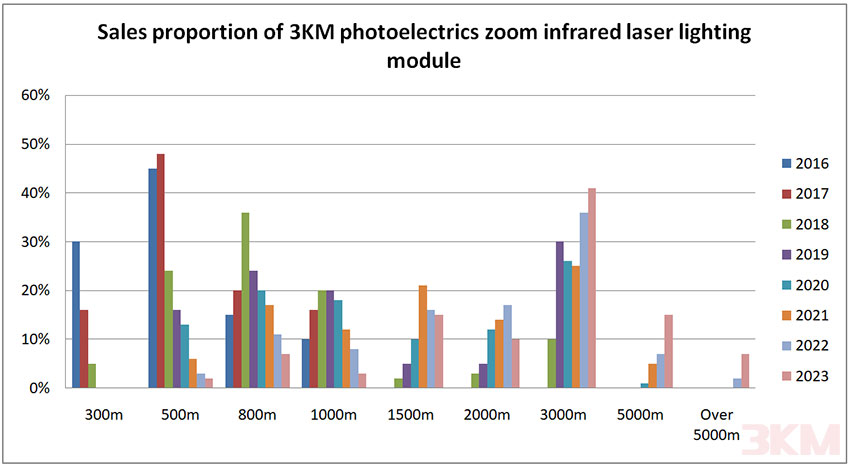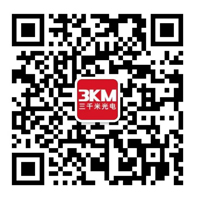Development trends of infrared laser lighting technology and market applications from 2024 to 2030 ( Part 1 )

Development Trends of Infrared Laser Night Vision Lighting Technology and Market Applications from 2024 to 2030
--Collaborate with industry leaders to pulse infrared laser night vision lighting
In 2024, infrared laser night vision lighting technology has been developed in China for nearly 20 years. Especially since 2017, the technology and application characteristics of infrared laser illuminations have shown a diversified development trend, including intelligent, safe, ultra long distance, clear throughout the process, lightweight, small, smoke and rain resistant, industrial, military grade, monitoring fill light, road detection, industrial inspection, machine vision, visual sensing, intelligent transportation, and other special functions and application characteristics at different latitudes.
Although infrared laser night vision lighting products are diverse and the technical application fields are becoming more and more extensive, the current largest application field is still mainly in security night vision monitoring and supplementary lighting, occupying more than 90% of the market share. This is because infrared laser lighting technology is still in the early stages of exploration in other application fields, and many potential market demands have not yet been stimulated.
In the field of security night vision monitoring and supplementary lighting market, infrared laser night vision lighting technology is constantly changing and developing. In the next few years, it will mainly be reflected in the following characteristics and trends:
1. The market for medium and close range IR laser night vision compensation has decreased, while the demand for ultra long range IR laser night vision compensation has significantly increased;
2. The safety of infrared laser night vision lighting modules is no longer an absolute advantage, but a basic requirement;
3. Clear laser compensation technology throughout the entire process and long service life are mandatory requirements;
4. The demand for special functions and special environmental applications is increasing;
5. Fixed focus infrared laser lighting are unintentionally inserted into the emerging high-tech industry.
I, the market for medium and close range IR laser night vision compensation has decreased, while the demand for ultra long range IR laser night vision compensation has significantly increased.
Due to the continuous improvement of the visual ability of full-color surveillance camera technology in low light environments, such as from 2016 to present, low light cameras have entered a high-speed development stage. Various types of low light cameras, such as moonlight level, star level, super star level, AI ultra low light, black light, AI black light, aurora, etc., can achieve 4K full color imaging without supplementary light in low light environments as low as 0.01 to 0.001 LUX. Setting aside the high cost factors, low light cameras can achieve clear color images at distances of tens or even hundreds of meters in poor ambient lighting, allowing them to naturally devour most of the market share of previous infrared LEDs and close range infrared laser night vision supplementary lighting.
The effect of full color video monitoring is more direct, simple, and popular in the market compared to the recognition of black and white monitoring effects with infrared compensation. Moreover, users are increasingly satisfied with the quality of video surveillance, and the cost difference is generally within an acceptable range. Therefore, an increasing number of close range infrared night vision monitoring markets are being occupied by full-color cameras.
However, no matter how powerful the low light camera technology is, its working principle ultimately cannot avoid two shortcomings. Firstly, it is impossible to image normally in a dark and harsh environment; Secondly, the imaging effect of long-distance night vision is poor, especially for objects in dark areas, fast-moving objects, or under the influence of high brightness light, the monitoring image may have problems such as image dragging, color deviation, large noise, flickering of brightness, local overexposure or darkness. The infrared laser supplementary lighting technology is specifically designed for long-distance night vision monitoring and lighting in harsh environments such as all black, no light, smoke, rain, and haze. Therefore, in terms of current technology, infrared laser compensation technology is still indispensable for achieving high-definition imaging in long-distance night vision monitoring.
As the close range infrared laser lighting module market is gradually being eroded by full-color camera monitoring, the habits of market users in categorizing infrared laser lighting modules have also gradually changed. The two categories of medium and close range have quietly disappeared, leaving only two categories: long range and ultra long range, as shown in the table below:

Comparison Table of New and Old Classification of Infrared Laser Lighting Module Categories
From the two classification habits shown in the table above, the new classification is simpler, clearer, and easier to identify. Infrared laser fill lights have evolved from the original four categories of close range, medium range, far range, and ultra long range to two categories based on a 1000m boundary:
● For distances up to 1000m, edge emitting or VCSEL lasers are used;
● Optical devices with fiber optic coupling are used for ultra long distances above 1000m;
● Those below 500m have been covered by fixed focus infrared laser lights.
Although the market share of mid to short range infrared laser compensation is gradually shrinking, we have found that the market for 1.5-3km of ultra long range compensation is growing significantly, and the demand for 5km and above ultra long range infrared laser compensation from market users is also increasing. This should be due to the increasingly widespread application fields of the security night vision monitoring market and the rapid progress in the technical performance of the entire security monitoring system.
We can confirm this market development trend from the sales share statistics of variable focus infrared laser lighting modules at various distances of 3KM Optoelectronics Company from 2016 to 2023. The market share of medium and close range infrared laser illumination modules has been decreasing year by year. The market share of 300m infrared laser lighting modules has decreased from 30% in 2016 to 0% in 2019; The share of 500m infrared laser lighting modules has decreased from nearly 50% in 2016 to only 2% in 2023; The 800m infrared lasser lighting modules have also shown a decreasing trend year by year since 2018, with less than 10% in 2023. On the contrary, the market share of ultra long range infrared laser lighting modules has been increasing year by year since 2018, and by 2023, the market share of 3000m infrared laser lighting modules has reached over 40%, and the market share of 5km infrared laser lighting modules has exceeded 15%. And this trend will further increase with the continuous development of science and technology.
Another reason for the decrease in the market share of mid to close range infrared laser lighting modules is that their prices are much lower than those of long-distance products. So, although the market share of close-up infrared laser lighting modules has decreased, the sales quantity may not necessarily decrease, but may even increase.

Comparison Table of New and Old Classification of Infrared Laser Lighting Module Categories
Ultra long range infrared laser lighting modules are mainly used in remote security night vision monitoring fields such as safe cities, intelligent transportation, vehicle systems, prisons, border and coastal defense, forest fire prevention, oil fields and depots, large factory areas, security departments, ecological protection areas, energy mining, water conservancy and electricity, airports and ports, administrative law enforcement, fishery and maritime supervision, military bases, etc. These application areas not only have long distances, but also mostly face harsh environments, and they have high requirements for the image quality of night vision surveillance cameras.
